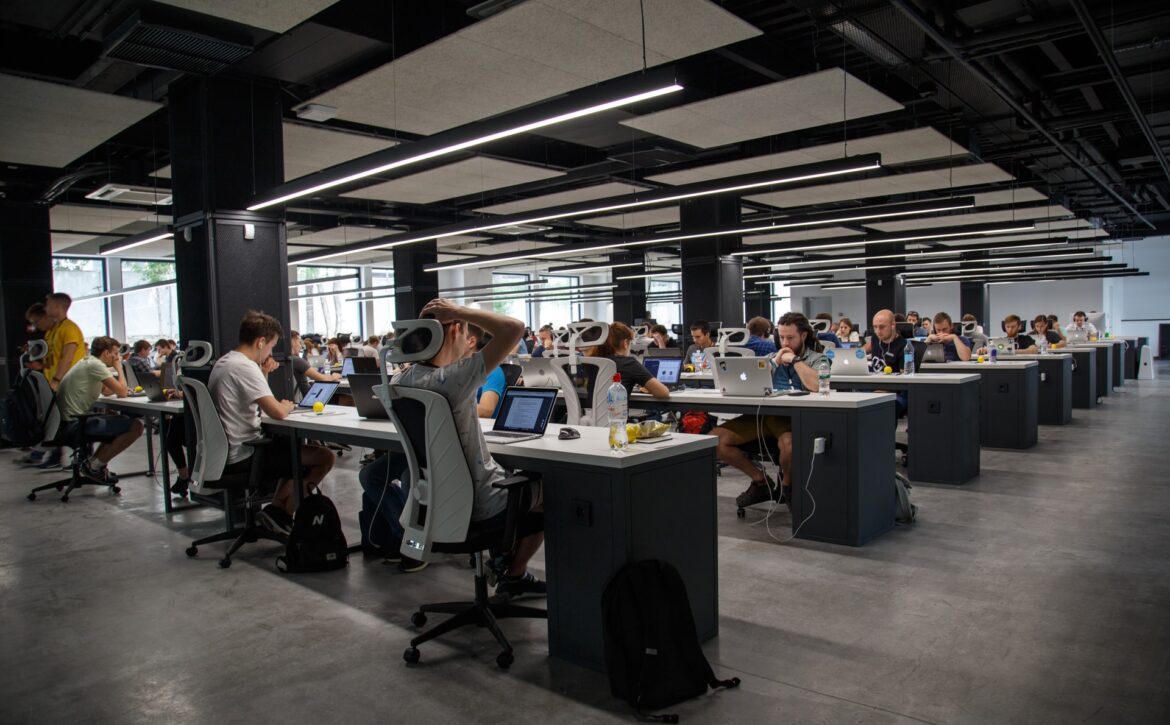Outsourcing the IT Service Desk
ITIL defines Service Desk as
A single point of contact (SPOC), which meets the communication needs of both users and IT employees, but also satisfies both customers and IT provider objectives.
IT Service Desk
With the introduction of the PC in 1981, the IT support center industry has grown. In the mid-’80s Help Desk was known as the “helpless desk” due to the poorly trained employees who had access to none of the tools that a twenty-first-century service desk now enjoys.
In reaction to the immature state of IT, The Information Technology Infrastructure Library (ITIL) was developed by the UK government. This set of best practices introduced the concept of an integrated service desk that is the single point of contact for all IT-related customer inquiries.
Research shows that the most frequent technical service at a service desk is ‘password changes’ and ‘user generation’. More and more institutions have automated those processes, but they still consume substantial manpower sources.
Most Service Desks try to increase the first-time fix rate. There are two main reasons for this. Firstly, the faster the incident is fixed, the quicker workers can start being productive again. This saves the organization time and money. It has been shown that customer satisfaction is related to the first-time fix rate. Secondly, first-time fixes also save the Service Desk money within the constraints of their budget. If the incident can be fixed at the first level and not escalated, there is no use of second or third line resources.
This means that the Service Desk has to provide the training and development that all staff performing jobs needs to acquire and maintain the skills and knowledge required for their positions.
Towa Service Desk
Now more than ever, cost pressures on the business are driving the need to migrate support to lower-cost channels and nearshore delivery locations. The IT Services organization must continue to minimize the cost of downtime to the business by providing clients with a Single Point of Contact (SPOC) for all technology incidents and requests, maximizing resolution on first contact through great troubleshooting capability, and managing all escalated incidents and problems through to resolution.
If you are a business owner you must have considered Technical Support and Service Desk outsourcing for your company. Although there are some benefits to having in-house staffing to field the types of phone calls and emails that come through to the Service Desk, there are several advantages to Technical Support and Service Desk outsourcing that you cannot afford to ignore.
Over the past ten to twenty years there has been a move to outsource the Technical Support and Service Desk function, and it appears that recently there is a move to bring the function back in-house, why is this?
I would like to propose two main reasons that organizations are unhappy with their outsourcing arrangements, and why there is a trend to reverse the situation.
Firstly, many of these outsourcing arrangements have been offshore – out of the USA, taking advantage of low labor costs in India and Eastern Europe. To the customer of your IT Services, when they call the Service Desk, for help with some sort of technical issue they should feel they are calling someone next door. Whether they are transferred to Bangalore or Ukraine it should be completely transparent. However, that has not been the case.
The Service Desk agents in these offshore locations are technically well trained; they are even given English names and receive elocution lessons. However, outsourcing the Service desk to an offshore location may yield cost savings, but customer satisfaction is not great. Generally, customer satisfaction with these offshore facilities has been low.
For the IT Services organization, the Service Desk is the window through which their customers build their perception of the value of both the IT Services department and the people who run it. So if Customers are not satisfied with the service they receive at the Service Desk, it will have a negative effect on the overall organization.
Gartner identified four factors as the main contributors to customer dissatisfaction with the offshore Service Desk and the drive to bring them back in-house:
Client knowledge: When a Service Desk is in-house, whether or not it is run and managed by the host company’s employees or an external provider, these people have access to internal communications which enable them to clearly understand the business and, therefore support end-users more knowledgeably. When the Service Desk is offshore, a good service provider may try to capture the information into a knowledge database, but the information is not always kept up to date or easily understood.
High turnover: A recent Gartner survey for all IT services showed that the worldwide dropout rate was 14.7 percent and offshore it was 22.1 percent. Although this can be a problem anywhere in the world, it can be extremely prevalent in low labor-cost countries where many IT job opportunities exist and many IT Service Desk agents will switch jobs for a small salary increase.
Cultural differences: If a client has a problem, he or she will relate the problem over the phone, but because of cultural differences, the Service Desk agent may not interpret the problem and react in the most appropriate manner. For example, a client employee may have a problem on a PC and want to know how to fix it. Instead of explaining how to fix the problem, the offshore agent may take control of the employee’s PC and fix it without explaining how this was accomplished because the agent doesn’t want to bother the client. However, the client employee may be dissatisfied because he or she doesn’t know how to fix the problem resulting in another need to call the help desk again in the future.
Cultural issues and dialect were the factors rated highest when discussing dissatisfaction with offshore Service Desk facilities
All this doesn’t mean that offshore facilities are all necessarily bad. Mexico and Central America for example have been receiving some fantastic reviews and increase demand. Mexico share 3 time zones with the USA, it is culturally more aligned, English is the ‘second language and the accent is very similar, and labor costs are super competitive.
The second reason for bringing the Service Desk back in-house is that the providers are based in technology solutions, and not a customer service focus, and this shows itself in their approach to market offering and results in negative perception for both the IT Services organization and the people running it.
Do you relate to this business case?
One company recently asked Towa to provide a Service Desk Analyst to work with their main Service Desk provider – as a pilot to test our approach. We had been selling to the organization that our approach of delivery Service Desk from a Customer design-centric focus, backed up by robust ITIL processes, so they invited us to do a 3-month trial. The main provider had been supplying IT infrastructure to the organization for many years, and a few years ago the organization asked if they could provide them with Service Desk. Of course, the answer was yes. But shortly after the contract had begun, complaints started to come in. This situation became more of an issue and eventually raise concerns about the CIO’s performance, and the overall value of the IT organization was being questioned. The main provider had a background in technical IT solutions. The people on the desk were good, technically very good engineers, but had no sense of customer service and satisfaction.
In a quick period our CSR (Customer Satisfaction Rate) started to show a trend, the company increases our team to 10 staff and more results started to be reported, better satisfaction, first-time fixes, and consistent friendly support for level 1 employees. Then fast forward 10 months later, the organization grew our team to provide more staffing for level 1 and level 2 Service Desk services.
Many companies get more focus on technical skills than actual customer-centric mindset.

Outsourcing your Service Desk to a Customer-centric provider
The right partner for your company will depend on many factors, like culture, language, time zone, size, and many others. Outsourcing is a good option with the right partner.
Service Desk and Technical Support outsourcing is an efficient way to reduce costs and increasing customer satisfaction – which can ultimately increase the profitability of your company.
The main benefits of outsourcing the Service Desk and IT Technical Support are as follows:
- Better financial leverage.
- That is because it can lower fixed costs and at the same time bolster return-on-investment.
- A known fixed cost.
- Improved Net Income Per Employee.
- No Training costs – your company would not have to spend money on training its staff to learn and master the use of new software or even hire more professionals to do so.
- No recruitment costs, and the inherent management time involved in the recruitment process.
- If the facility is off-site, savings on office space and consumables can be made.
- Management Issues.
- Frees up time to spend on key competencies and applications, and focus more on the Customer – leaving the provider to deal with office support, operating systems, and other non-core tasks/functions.
- No need to worry about the constant ‘churn’ of employees.
- No worries about being able to provide career progression – the provider will take care of this.
- No worries about cover for sickness and holidays.
- You will be able to create a better customer experience – this is the business of an outsourcer with Customer-Centric designed services.
Increased positive perception of the value of IT Services and the people who run it.
A company can move its help desk outside for many reasons. Help desk outsourcing can be a strategy in itself. On its own, it can help a business achieve specific and numerous targets or goals. But logically, the practice you have to manage the partner relationship.
For the ‘cons’, Service Desk outsourcing can make a company lose its control over training, although the contract would stipulate what skills and competencies are required – it is up to the provider to ensure its employees have the required skills. It would also have to turn over specific parts of its operations to an external vendor, which can raise issues in terms of privacy and trading secrets, but with the right contract, this should be taken care of.
Some companies express their worry that Service Desk outsourcing employees may lack concern for the customers. This logically is a serious concern because most clients are sensitive over Customer Satisfaction ratings. If Service Desk representatives of the outsourcing provider are not professional and educated, it can reflect not on the outsourcing firm but on the company that pays for the service.
Finally, in a Service Desk outsourcing the setup is off-site, the company would have to get used to having remote personal. The provider can be operating in another country. As described above, there can be cultural differences that may show in the service. Businesses that prefer to keep their staff socially and culturally intact will also have inevitable issues with offshore outsourcing.
When looking for a Service Desk or Help Desk provider is a far better option to consider a neighboring country like Mexico, with lots of well-ranked Universities, proximity, cultural affinity, English as a second language, competitive and fair rates, same time zones, are a good value proposition.
Towa Software has over 20 years of experience to guarantee technical skills and outstanding customer support.
Starting small and build trust with your provider before scaling.
We outsource Service Desk services for companies in the USA for more than 10 years now.
You can contact us at support@towasoftware.com or give us a call via (+1) 210-787-4525 for more information.
You can Book a 15-min call call with one of our Customer Success Managers for a conversation.



